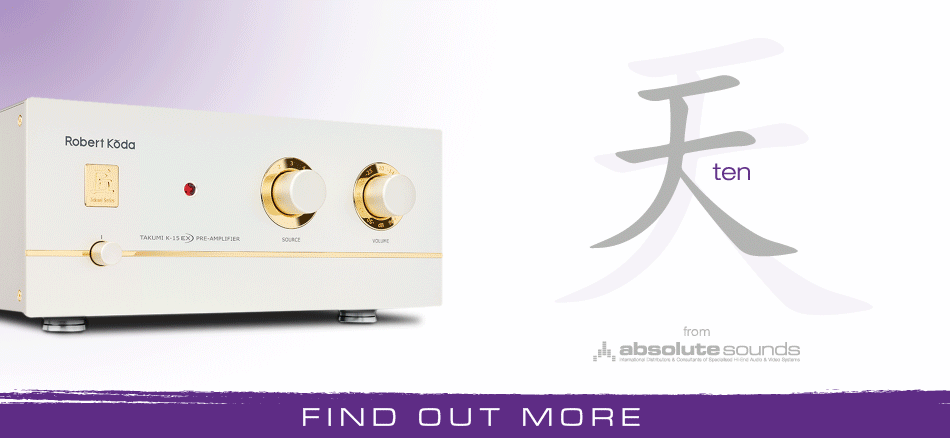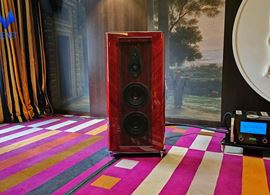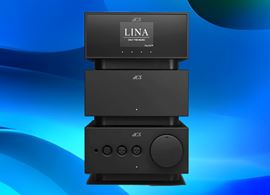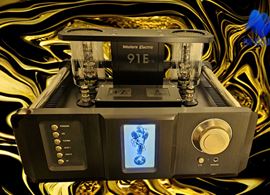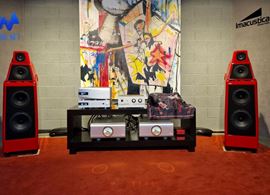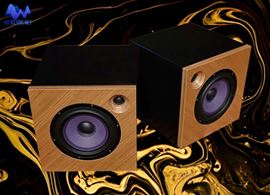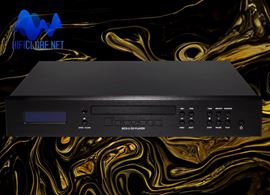SONUS FABER CREMONA ELIPSA
Teste comparativo Hificlube/Stereophile
The woofer's output features the usual minimum-motion notch at the port tuning frequency
...a slight dip at the 250Hz crossover point…
The notch in the midrange unit's low-frequency response indicates that its port is tuned to a low 43Hz; though that port does have a very slight peak at that frequency, the main peak in its output occurs an octave-and-a-half higher in frequency…
Other than the interaction with the room responsible for the saddle seen at 50-75Hz (probably the sum of the two lower ports output)
The Cremona Elipsa has a usefully higher voltage sensitivity than average, at an estimated 90dB(B)/2.83V/m. Though this is slightly lower than the specified 91dB, the shortfall is not important. While it will therefore require less of a voltage swing to play loud, the speaker is still a demanding load for the partnering amplifier, with an impedance magnitude that drops to 2.5 ohms throughout the upper bass (fig.1). There is also a punishing combination of 4 ohms magnitude and -50 ° electrical phase angle at 70Hz that will suck gobs of current from the amplifier.
The impedance remains at 4 ohms for most of the audio band dropping below that at 25Hz, 75Hz and 750Hz, the phase angle being also higher at these frequencies. However the Elipsa is a very sensitive speaker
There was a mild suckout at the 2.5kHz crossover point which became more severe well above the tweeter axis
A large suckout develops at 2.3kHz, the upper crossover frequency, for listener ear heights above the tweeter axis…
I also detected a minor dip or lack of energy at 8kHz
The Elipsa's lateral radiation pattern is superbly wide and even in the mid-treble and below, but features a sharp discontinuity at 7.5kHz .
Above that frequency, the wide baffle drastically restricts the tweeter's off-axis output. As a result, the speaker might sound a little airless in large rooms.
The fundamental reason for toeing-in the Elipsas resides in the off-axis response that has been optimized to counterbalance the on-axis excess energy exhibited by the 3kHz to 6kHz large plateau.
So it dawned on me that the standard rake angle of the Elipsa, as mounted per instructions on the metal crossbars screwed to its bottom, might not be enough to ensure geometric phase alignment at a relatively short listening distance, and duly removed the steel floor couplers from underneath the back spikes, thus allowing the speakers to lean further back by increasing the rake angle. The mid to high integration improved audibly.
Higher in frequency, the Elipsa's farfield response is impressively flat, though the details of that flatness do depend quite critically on exact listening axis, which is why experimenting with the baffle's rake angle produces relatively large changes in perceived treble balance… As discussed above, the asymmetric spikes should be used to place the listener's ears somewhere between the tweeter and midrange axes, though exactly where will depend on the room acoustic and the tonal character of the listener's system.
I found myself enjoying more and more the clean and grain free air around the high notes of female voices and instruments.
Throughout my auditioning, I continued to be impressed by the Elipsa's smooth, grain-free treble
There remained a few quibbles to solve though, of which the most annoying was a tendency to sound bright, almost on the verge of impertinence, I tentatively attributed to the restlessness of youth.
The Elipsas are more revealing, expressive, explicit, clear, and bold in the way they present music and ambience clues. Maybe too much so if one takes into account the buoyant performance of the ring radiator tweeter.
Over time, however, I became convinced that there was a narrow band of brightness in the speaker's mid-treble -not so much that any coloration was audible, but the speaker was definitely a bit fussy with recordings with a lot of energy in that region. Yes, there is a very slight energy excess apparent in the tweeter's bottom octave that correlates with the slight brightness I noted,
Over time, however, I became convinced that there was a narrow band of brightness in the speaker's mid-treble…between 2 and 5kHz ...I felt that a bit more reduction in presence-region energy was needed...
…a rising trend from 3.5kHz up to a suspicious peak at 6kHz, the latter being the more objectionable to my ears at first…
HIFICLUBE
STEREOPHILE
Teste comparativo Hificlube/Stereophile
The woofer's output features the usual minimum-motion notch at the port tuning frequency
...a slight dip at the 250Hz crossover point…
The notch in the midrange unit's low-frequency response indicates that its port is tuned to a low 43Hz; though that port does have a very slight peak at that frequency, the main peak in its output occurs an octave-and-a-half higher in frequency…
Other than the interaction with the room responsible for the saddle seen at 50-75Hz (probably the sum of the two lower ports output)
The Cremona Elipsa has a usefully higher voltage sensitivity than average, at an estimated 90dB(B)/2.83V/m. Though this is slightly lower than the specified 91dB, the shortfall is not important. While it will therefore require less of a voltage swing to play loud, the speaker is still a demanding load for the partnering amplifier, with an impedance magnitude that drops to 2.5 ohms throughout the upper bass (fig.1). There is also a punishing combination of 4 ohms magnitude and -50 ° electrical phase angle at 70Hz that will suck gobs of current from the amplifier.
The impedance remains at 4 ohms for most of the audio band dropping below that at 25Hz, 75Hz and 750Hz, the phase angle being also higher at these frequencies. However the Elipsa is a very sensitive speaker
There was a mild suckout at the 2.5kHz crossover point which became more severe well above the tweeter axis
A large suckout develops at 2.3kHz, the upper crossover frequency, for listener ear heights above the tweeter axis…
I also detected a minor dip or lack of energy at 8kHz
The Elipsa's lateral radiation pattern is superbly wide and even in the mid-treble and below, but features a sharp discontinuity at 7.5kHz .
Above that frequency, the wide baffle drastically restricts the tweeter's off-axis output. As a result, the speaker might sound a little airless in large rooms.
The fundamental reason for toeing-in the Elipsas resides in the off-axis response that has been optimized to counterbalance the on-axis excess energy exhibited by the 3kHz to 6kHz large plateau.
So it dawned on me that the standard rake angle of the Elipsa, as mounted per instructions on the metal crossbars screwed to its bottom, might not be enough to ensure geometric phase alignment at a relatively short listening distance, and duly removed the steel floor couplers from underneath the back spikes, thus allowing the speakers to lean further back by increasing the rake angle. The mid to high integration improved audibly.
Higher in frequency, the Elipsa's farfield response is impressively flat, though the details of that flatness do depend quite critically on exact listening axis, which is why experimenting with the baffle's rake angle produces relatively large changes in perceived treble balance… As discussed above, the asymmetric spikes should be used to place the listener's ears somewhere between the tweeter and midrange axes, though exactly where will depend on the room acoustic and the tonal character of the listener's system.
I found myself enjoying more and more the clean and grain free air around the high notes of female voices and instruments.
Throughout my auditioning, I continued to be impressed by the Elipsa's smooth, grain-free treble
There remained a few quibbles to solve though, of which the most annoying was a tendency to sound bright, almost on the verge of impertinence, I tentatively attributed to the restlessness of youth.
The Elipsas are more revealing, expressive, explicit, clear, and bold in the way they present music and ambience clues. Maybe too much so if one takes into account the buoyant performance of the ring radiator tweeter.
Over time, however, I became convinced that there was a narrow band of brightness in the speaker's mid-treble -not so much that any coloration was audible, but the speaker was definitely a bit fussy with recordings with a lot of energy in that region. Yes, there is a very slight energy excess apparent in the tweeter's bottom octave that correlates with the slight brightness I noted,
Over time, however, I became convinced that there was a narrow band of brightness in the speaker's mid-treble…between 2 and 5kHz ...I felt that a bit more reduction in presence-region energy was needed...
…a rising trend from 3.5kHz up to a suspicious peak at 6kHz, the latter being the more objectionable to my ears at first…
HIFICLUBE
STEREOPHILE

